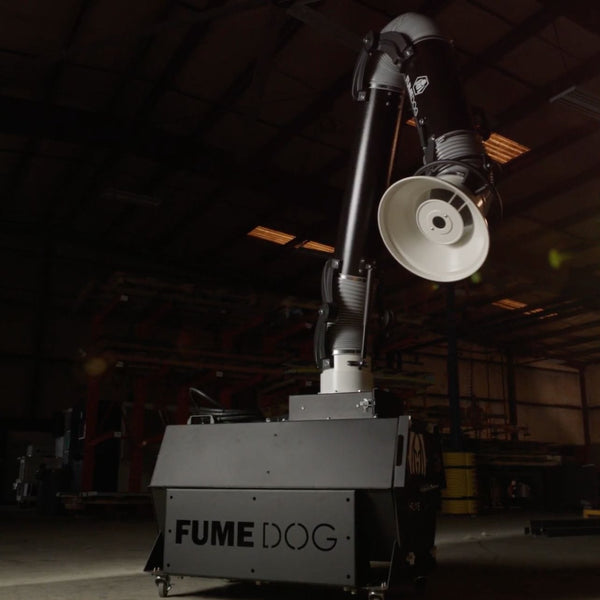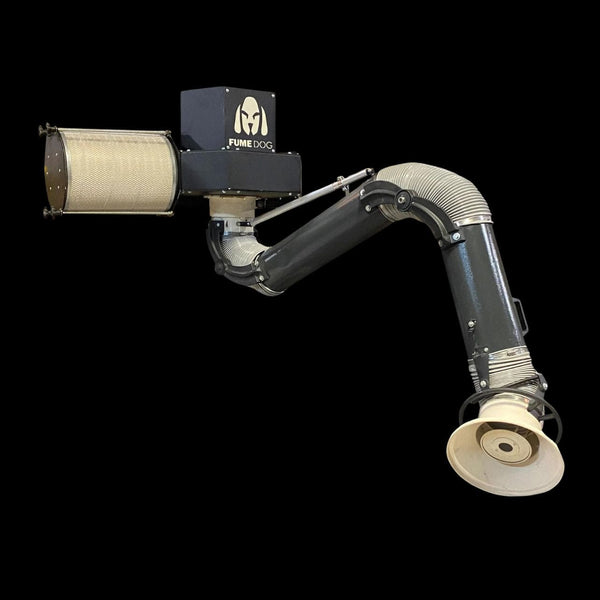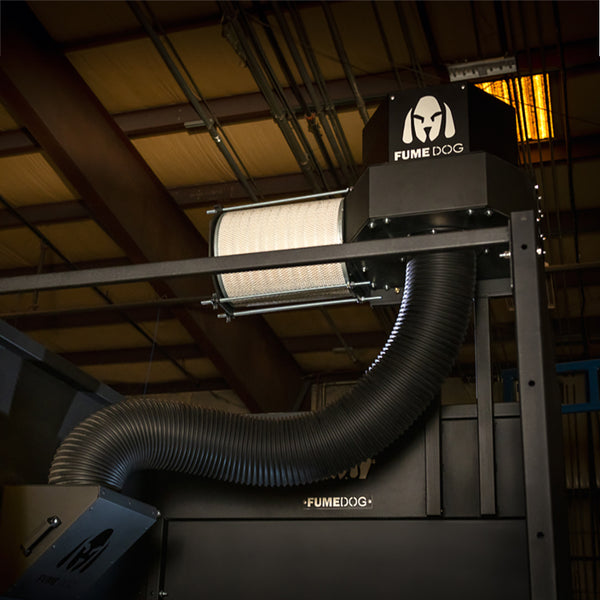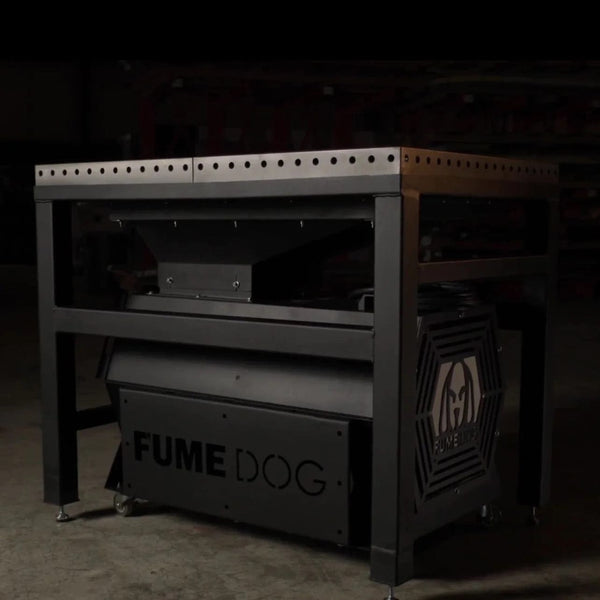
Welding is an industry that’s existed for thousands of years, dating back to the ancient Egyptians. Hieroglyphs found on some relics and structures actually depict welders manipulating bronze, and humanity has utilized the practice ever since then. Since the 1800s, metalworking has remained consistent, and today, it’s a highly rewarding career that builds the entire world around us.
However, welding is not without its dangers. In fact, there are many physical and chemical hazards that welders face daily. Of those, exposure to toxic fumes is potentially the most catastrophic. Various byproducts of metal cutting, like hexavalent chromium, or Cr(VI), can cause life-threatening respiratory issues and even cancer. Luckily, these dangerous compounds are easily thwarted with simple ventilation techniques.
As a warehouse manager, weekend-enthusiast, welding employee, or student, you may be wondering, “What are the best ways to ventilate a welding shop?” There are three forms of ventilation that ensure protection for yourself and others. Some are absolutely required to maintain a safe working environment, but they’re much more effective when used together. The usefulness of these methods depends on a few factors: the size of the workshop, the number of individuals inside, and the quantity of work conducted.
Natural Dilution
Ventilation is a natural process that Webster defines as “the circulation of air through a space.” As fresh air moves into a small space, it replenishes and pushes out unclean fumes. This form of ventilation, like the name suggests, is completely natural—it’s not dependent on power and is perfect in many situations. So, you only need to open a door or window to implement natural dilution into your workshop.
This form of ventilation is best for smaller operations or as a supplement to mechanical dilution or a local exhaust. If you enjoy welding on the weekend in your garage, open the door, as this provides a great deal of protection for yourself and others.
However, there are limitations to natural dilution. The Occupational Safety and Health Administration, or OSHA, sets forth various regulations and requirements relating to the efficacy of this method. It’s only safe to use natural ventilation if:
- The welding area has over 10,000 cubic feet per welder;
- The ceiling is over 16 feet high;
- No partitions, structures, or equipment blocks cross-ventilation; and
- Welding is done in a non-confined space.
As you can see, professional operations demand more than an open window or door. So, for most places of business, the best forms of ventilation (both ethically and legally required) are mechanical and local.
Mechanical Dilution
Mechanical dilution ventilation utilizes machinery to clean and recycle air. The devices responsible for this method include roof exhaust fans and smaller wall fans. OSHA requires mechanical assistance like this if:
- The welding area has under 10,000 cubic feet for each welder;
- The ceiling is under 16 feet high;
- The welding space is confined; or
- There is an obstruction to cross ventilation.
These giant portable or permanent fans effectively protect the well-being of all employees and students within the workshop, as long as the space meets the requirements of OSHA. Paired with natural dilution, the chances of toxic fume exposure and sudden combustion are significantly reduced.
Even areas that exceed these measurements benefit from mechanical dilution methods, especially if the quantity of work conducted within the shop is extensive. If you’re struggling to determine if mechanical assistance is proper for you and your business, consult safety administrators and research OSHA requirements extensively.
Local Exhaust
Of the best ways to ventilate a welding shop, local exhaust ventilation is king. We’re not being biased on this fact, either—fume extractors are the most effective devices for protecting employees, students, and yourself. But what exactly is local ventilation? Simply put, it’s the elimination of toxic fumes straight from the source.
By placing an extractor near the arc or torch, you can remove chemicals before they even enter the air. With quality equipment, this process is far better than relying on fans or windows. At FumeDog, we carry different devices that accomplish extraction in various ways.
Wall-Mounted
Wall-mounted extractors capture fumes like any other extracting device, but they’re conveniently placed off the ground and feature extendable, moveable arms. This eliminates floor hazards that individuals could trip over.
Wall-mounted machines are best for large operations in smaller spaces but work well for any kind of welding business. They’re also highly durable since they remain unmoved throughout their lifespan.
Portable
Suppose your operation is more minor compared to other businesses, but your workshop is more expansive. In that case, you might want to consider purchasing a portable welding fume extractor or two (or three!).
These devices offer more flexibility for welders, which is essential if your space is constantly shifting and changing. It also provides welders with more working surfaces since they can drag the extractor around as they find a place to work. Our portable fume extractors are easily mountable, giving you the most options when it comes to your floor plan design.
Downdraft Tables
This ventilation method is very cool, in addition to being potentially the safest and most convenient option. These tables are workstations that have built-in extractors, so you don’t have to worry about extraction arms or other devices.
Using negative airflow, the table itself removes toxins and fumes before entering the air supply. You can effectively implement downdraft equipment into any space or operation. They’re suitable for welding schools, larger businesses, small businesses, or even your garage.
The nature of ventilation is, in some ways, fascinating. It’s the best form of protection against toxic fume exposure and works both naturally, mechanically, and locally. For career welders, their familiarity with this aspect of the job may cause them to take it for granted. However, this information can save lives when wondering about the best ways to ventilate a welding shop.
Of course, combining these methods with personal protective equipment is the most effective way to safeguard yourself, employees, and students. Make sure you understand your working environment before implementing these ventilation techniques.
With that knowledge in your back pocket, you can easily provide a safe shop that’s productive and efficient. Consider FumeDog’s impressive selection of quality fume extraction devices for all your welding workshop needs.
Related Articles:
- Basic Maintenance Guide for Fume Extraction Systems
- Do You Need a Fume Extractor When You Weld?
- 2 Things To Consider When Choosing Welding Fume Filters






